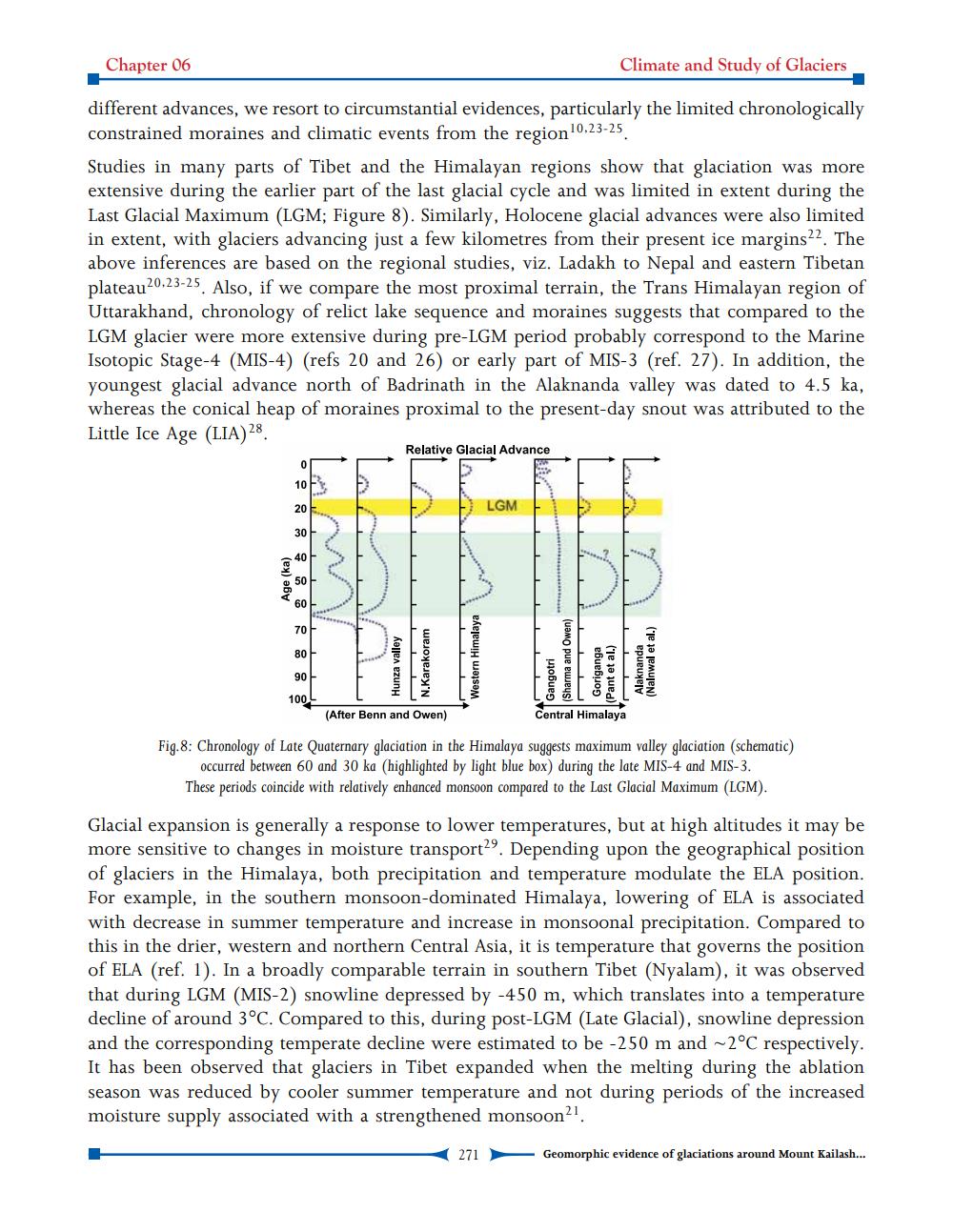________________
Chapter 06
Climate and Study of Glaciers
different advances, we resort to circumstantial evidences, particularly the limited chronologically constrained moraines and climatic events from the region 10,23-25. Studies in many parts of Tibet and the Himalayan regions show that glaciation was more extensive during the earlier part of the last glacial cycle and was limited in extent during the Last Glacial Maximum (LGM; Figure 8). Similarly, Holocene glacial advances were also limited in extent, with glaciers advancing just a few kilometres from their present ice margins22. The above inferences are based on the regional studies, viz. Ladakh to Nepal and eastern Tibetan plateau20,23-25. Also, if we compare the most proximal terrain, the Trans Himalayan region of Uttarakhand, chronology of relict lake sequence and moraines suggests that compared to the LGM glacier were more extensive during pre-LGM period probably correspond to the Marine Isotopic Stage-4 (MIS-4) (refs 20 and 26) or early part of MIS-3 (ref. 27). In addition, the youngest glacial advance north of Badrinath in the Alaknanda valley was dated to 4.5 ka, whereas the conical heap of moraines proximal to the present-day snout was attributed to the Little Ice Age (LIA)28.
Relative Glacial Advance
Age (ka)
Hunza valley
N.Karakoram
Western Himalaya
Gangotri (Sharma and Owen)
Goriganga (Pant et al.)
90
Alaknanda (Nalnwal et al.)
100%
(After Benn and Owen)
Central Himalaya
Fig.8: Chronology of Late Quaternary glaciation in the Himalaya suggests maximum valley glaciation schematic)
occurred between 60 and 30 ka (highlighted by light blue box) during the late MIS-4 and MIS-3. These periods coincide with relatively enhanced monsoon compared to the Last Glacial Maximum (LGM).
Glacial expansion is generally a response to lower temperatures, but at high altitudes it may be more sensitive to changes in moisture transporta'. Depending upon the geographical position of glaciers in the Himalaya, both precipitation and temperature modulate the ELA position. For example, in the southern monsoon-dominated Himalaya, lowering of ELA is associated with decrease in summer temperature and increase in monsoonal precipitation. Compared to this in the drier, western and northern Central Asia, it is temperature that governs the position of ELA (ref. 1). In a broadly comparable terrain in southern Tibet (Nyalam), it was observed that during LGM (MIS-2) snowline depressed by -450 m, which translates into a temperature decline of around 3°C. Compared to this, during post-LGM (Late Glacial), snowline depression and the corresponding temperate decline were estimated to be -250 m and -2°C respectively. It has been observed that glaciers in Tibet expanded when the melting during the ablation season was reduced by cooler summer temperature and not during periods of the increased moisture supply associated with a strengthened monsoon
271
Geomorphic evidence of glaciations around Mount Kailash...




